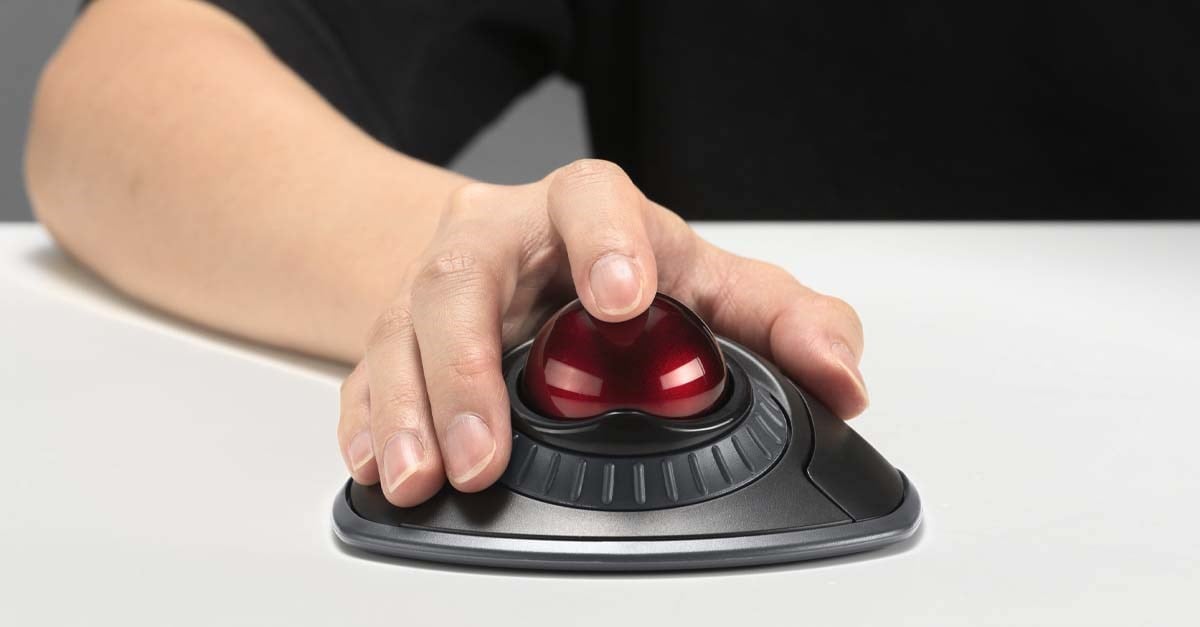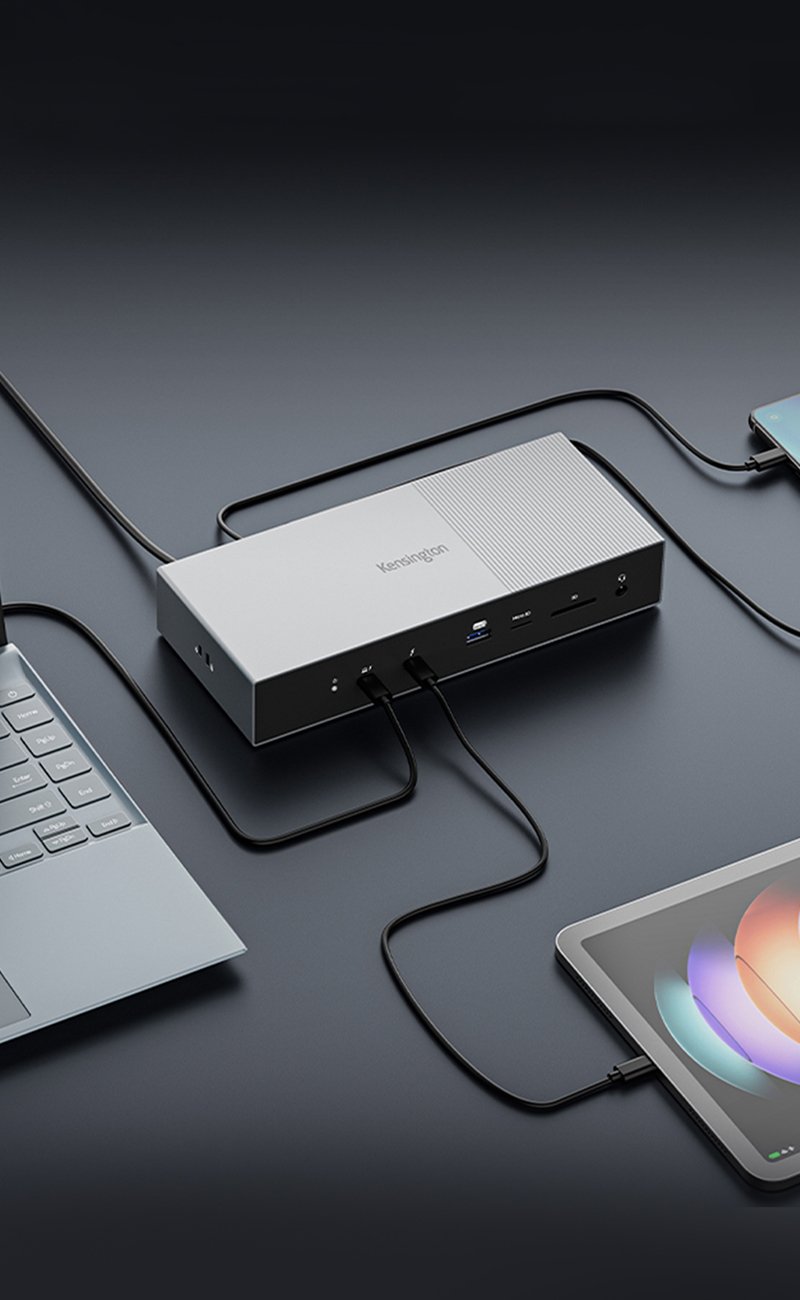
Repetitive stress injury in wrists is mostly the result from the constant and repetitive movement required in mice devices —causing what is usually called mouse pain, is there a mouse replacement to reduce RSI symptoms? Or right away, to avoid it?
How can trackballs mice help you prevent wrist pain and RSI
Trackball mice can reduce repetitive stress injury (RSI) symptoms, as their stationary feature allows users to operate the pointer around the device screen, without having to change their hand's position from one place to another
In fact, nowadays it is more common for teenagers and 9 to 5 office workers to suffer RSI due to the constant usage of devices such as cellphones and computers.
Tips to prevent RSI
Luckily, there are easy ways to avoid and prevent overuse injuries when they are caused by mouse devices, so here are some tips:
1. Take frequent breaks: If RSI is caused by constant and repetitive movement in the wrist, then one simple option to avoid it is to make that movement non-constant.
Even if you have really demanding work and you can not take many breaks throughout the day to stand up and drink something — or to simply stretch your legs — 2 minutes hand stretches should do the job.
The trick here is to be present and conscious so you really know how much time you are spending on the computer without stopping for even a second, and then just… stop doing it for a minute or two.
2. Keep your desk clean: At first glance, it might seem like an overstretch, but keeping your desk clean can have a lot to do with how you use your mouse.
Things on your workstation, especially around your mouse area, can really limit the space you have to move your mouse around, forcing you to make small movements that, after a while, can become repetitive.
3. Try forearms support: There are many options for forearm and wrist support out there. Find one that suits your desktop space, mouse device and personal needs.
These types of accessories, which come in the shape of pads, allow your wrist to have a neutral and supported movement, avoiding inclinations or backward bending.
Kensington has a wide variety of these products that can help, and they can also be really accessible: ErgoSoft Wrist Rest for Standard Mouse ($9.99).
4. Check your sitting posture: While using a computer, how you sit can really change the whole game. Generally, a bad sitting posture will affect your back, neck, shoulders, arms, and wrist positions.
For instance, just as we recommended on the first tip, being conscious and present can also help you here, as it allows you to check your posture every so often.
For an enhanced sitting posture, try using ergonomic back rests or foot rests. They’ll convert any office (or home office) chair into an ideal workstation item.
5. Explore alternative mice: Last, but not least, try checking new mice options for your desktop.
Sometimes the problem can be the devices you are using, maybe the mouse is too small, maybe moving it around might be straining your wrist muscles too much, or maybe the constant clicking is causing the repetitive stress injuries in your fingers.
The truth is, there are many good ergonomic mouse options around there to treat this globally known issue.
Ergonomic mice devices that can help
While searching for the best mouse to avoid RSI, try looking for a vertical design that can help eliminate wrist rotation and hypertension, thus limiting the chances of straining the muscles in your hand. Pro Fit Ergo Vertical Wireless Mouse is a good example of this, as its design features a natural handshake position.
In case the vertical design is not for you, you can also look for ergonomist-approved features in these devices that guarantee a good hand position while using it, e.g. Pro Fit Ergo Wired Mouse.
You can also seek completely different devices that have the same function as mice. We personally recommend trackballs, as they can be a good ergonomic option due to the lack of wrist movements. The Expert Mouse Wireless Trackball even includes a detachable hand rest!
Are trackballs actually better for RSI prevention?
While some people prefer mice’s accuracy over trackballs, these devices can be helpful in avoiding repetitive stress injury.
Trackballs are known for having a big rolling ball that allows scrolling and cursor moving much more comfortably, without the need of moving the hand. Naturally, this will result in a great option for your wrist, as it limits the amount of movement you have to do to get things done on your computer.
Trackballs such as the Expert Mouse Wireless Trackball or the Orbit® Trackball with Scroll Ring feature a centrally mounted ball that makes them finger-operated devices. This allows for a better wrist posture and reduces the risks of straining hand muscles. And although some will not be used to handle finger-operated trackballs, there are also thumb-operated trackballs that are more similar to mice, like the Pro Fit Ergo Vertical Wireless Trackball or the Pro Fit Ergo Vertical Wired Trackball.
In case you can not decide between one or the other, there are also trackballs that feature a design that fuses the best of both finger-operated and thumb-operated: Orbit Fusion Wireless Trackball.
At a glance:
Finger-operated
No need for wrist movement.
Can be hard to handle at first, if not used to them.
Better wrist posture.
Thumb-operated
Similar to normal mice.
Easier to get around.
Good wrist position.
Mixed
Can be similar to normal mice.
Features a center-mounted scrolling ball.
Good wrist position.
RSI Symptoms
Now, in case you’re unsure whether you suffer from RSI or not, notice that inflammation, muscle strain and tissue damage are some of its symptoms that affect people throughout the world.
RSI symptoms can sometimes be mistaken as a simple muscle strain that will go away on its own. But, in fact, overuse injuries can be problematic if not treated immediately, as their symptoms are more than just a muscle strain. They usually include:
- Numbness or tingling.
- Pain in the affected area.
- Stiffness and tension in the affected muscles.
- Swelling.
- Sensitivity to cold and hot temperatures in the affected area.
How to treat or ease repetitive stress injury symptoms
One of the main factors that play a role in healing or easing RSI is resting time. The rooted cause of the repetitive movement makes breaks important for your wrist. So, first, try resting for a while. Allow your wrist and hand muscles to relax and recover from said repetitive movement.
To help soothe the swelling and the pain, you can use cold packs and analgesics. Note that you should always consult your doctor in case these symptoms worsen or do not go away.
As you can see, treating RSI should not be difficult — depending on the person it might be —, nonetheless, preventing it will always be easier and better for both your health and your workflow.
